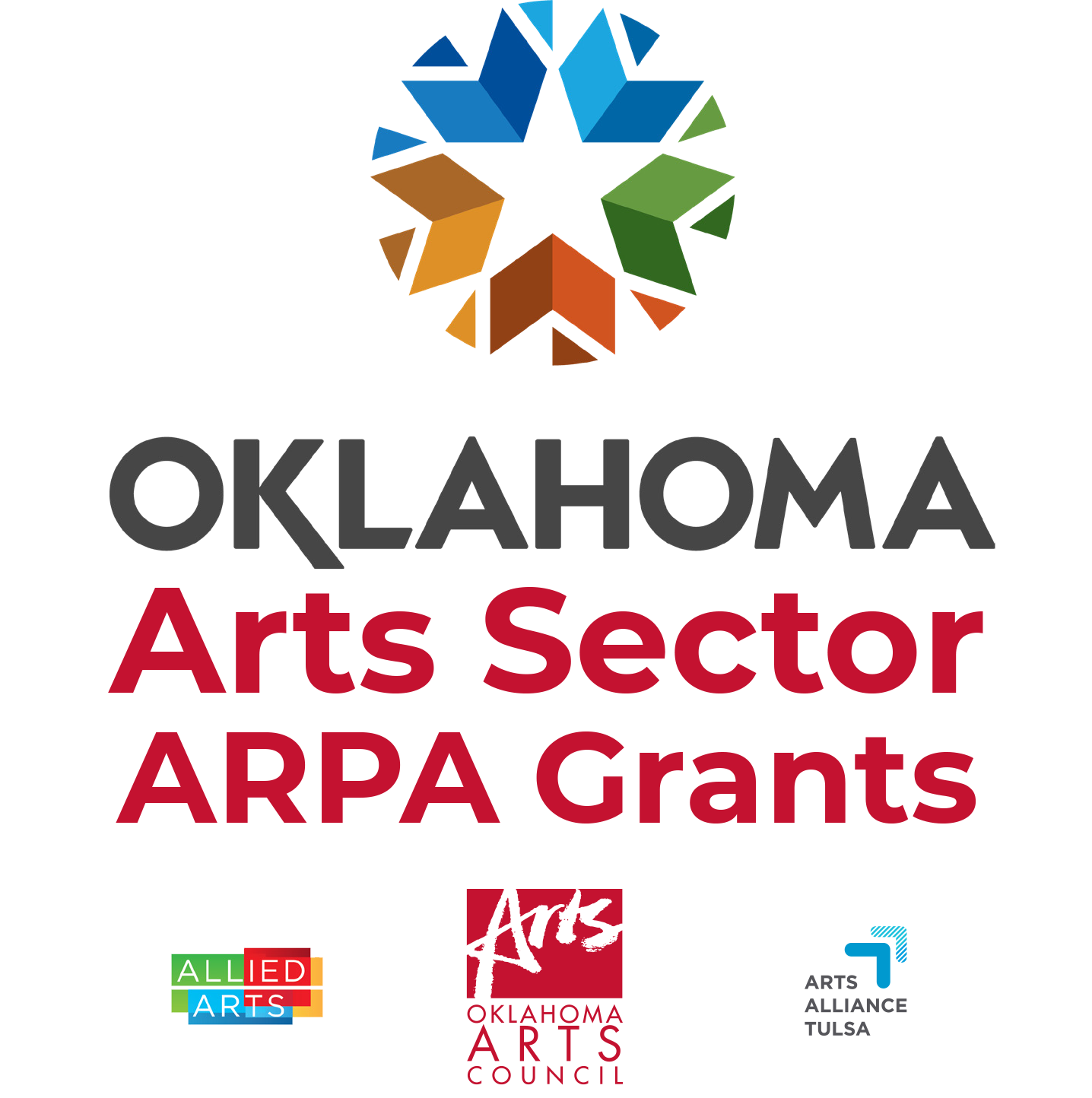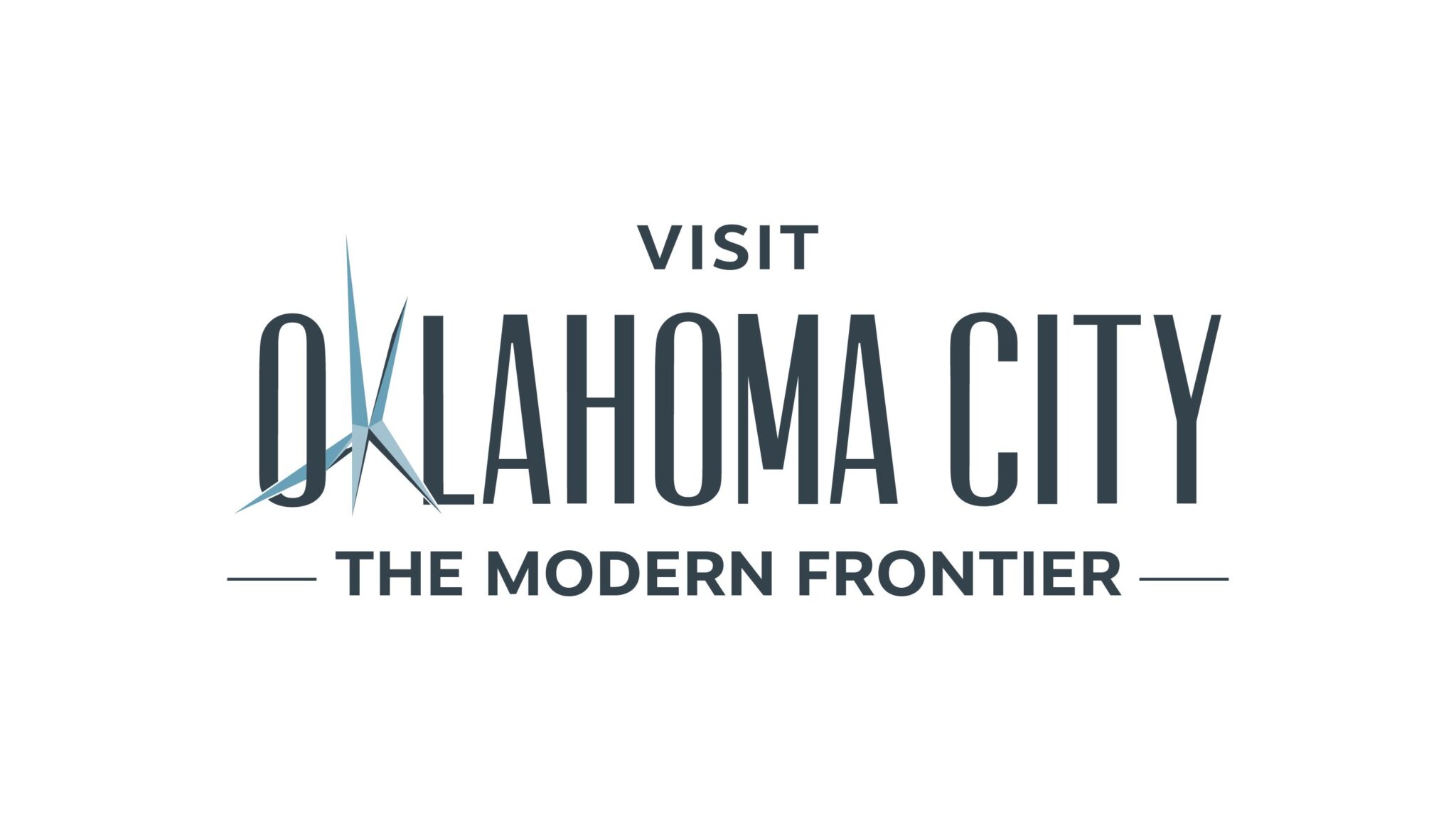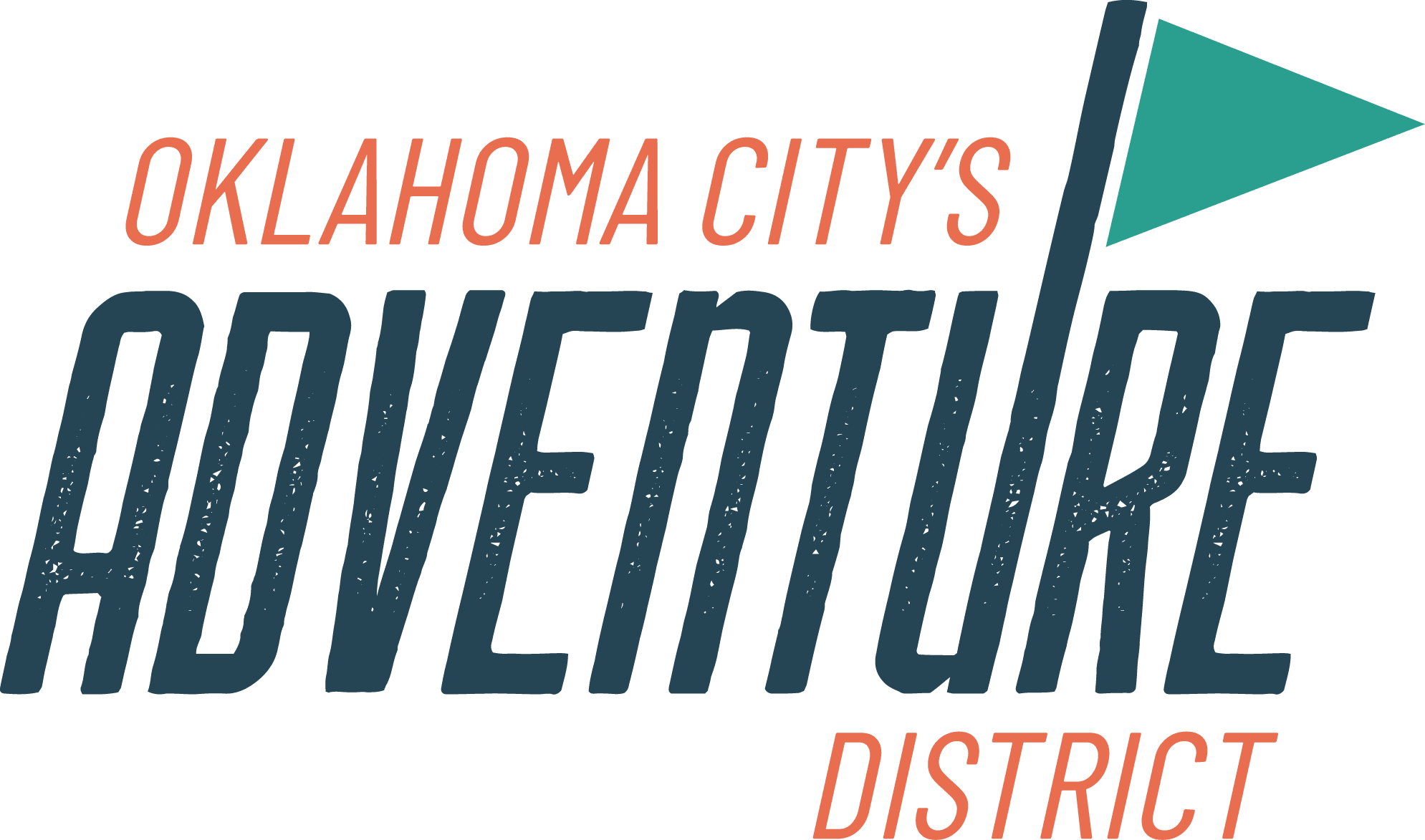A. Keith Brodkin Contemporary Western Artists
Explore collections associated with Brodkin Project artists here:
Alphabetical List of Brodkin Project Artist Interviews
Abbett, Robert K.
Although Robert K. Abbett began college as a pre-med student at Purdue University, he eventually transferred and graduated from the University of Missouri with a Bachelor of Arts degree. From there, Abbett began his art career as an illustrator, which influenced his style and ability to paint each sporting dog as an individual, placing it in an authentic setting. Abbett is best known for his painting of hunting dogs and other wildlife. For several years Abbett taught a workshop at the Scottsdale Artists School, which is also where his grandfather taught school on the Diamond S Ranch near Camp Verde at the turn of the century.
May 15, 2007 — 2 hours 9 minutes — video
Acheff, William
Born in Alaska, William Acheff specializes in the trompe l’oeil (deceive the eye) technique. Because of his close relationship with his grandmother, he recognizes the ethnic quality of Indian artifacts and enjoys bringing them to life in his oil paintings. Another major influence to Acheff’s career has been former teacher Italian artist Roberto Lupetti. Acheff won the Prix de West Purchase Award in 1989 for Flapjacks, and in 2004 for As You Were.
June 11, 2004 — 1 hour 7 minutes — audio
May 6, 2009 — 1 hour 38 minutes — video
YouTube: 10-minute video clip
Allen, Douglas
Born in New Jersey in 1935, Douglas Allen’s interest in art started at a young age and was encouraged by his father, who would take him to visit museums and art dealers on weekends. Eventually, Allen took classes at the Ford Art School in Jersey City, New Jersey, and the Newark School of Fine and Industrial Arts, and lessons from Paul Branson. In high school, Allen spent time sketching animals at the Bronx Zoo, and wildlife remains a focus of his artwork. In the late 1950s, Allen illustrated a series in Outdoor Life magazine titled “Big Game Animals of North America,” written by Jack O’Connor and George Goodwin. For this project, Allen created twenty oils of animals and eighty pen-and-ink drawings. The series ran for twenty months and was published as a book in 1961.
June 12, 2009 — 57 minutes — video
Andersen, Roy
Roy Andersen was born in New Hampshire in 1930, a first-generation son of immigrants from Denmark. His training is from the Chicago Academy of Fine Art and the Art Center School of Los Angeles. Andersen had an impressive career as an illustrator in New York, painting for Sports Illustrated, Time Magazine, National Geographic, and even creating over a dozen US postage stamps, before leaving for Arizona and Texas to live a quieter life. In addition to painting, Andersen raises Paint Horses, which you may find in many of his works. In 1989, he was voted into membership into the Cowboy Artists of America.
June 13, 2008 — 1 hour 1 minute — video
Angell, Tony
Born in California in 1940 and a resident of Washington, Tony Angell focuses his art on wildlife in the Pacific Northwest. Of particular interest to Angell is the raven, which is the subject of books he has written. Angell is self-taught, and has said much of his artistic growth has come from trial and error, and many lessons learned from mentors, both living and deceased. He began his career in the 1960s as a painter, and later pursued sculpture. Angell studies and recreates from the diversity of animals of the North Pacific. He has worked with a number of materials, though stone has always been his first choice.
June 22, 2009 — 2 hours 5 minutes — video
Aspevig, Clyde
Born in Montana in 1951, Clyde Aspevig began painting earnestly at the age of nine, and later received a degree in art education from Montana State University. He is a landscape painter who does sketches on location and finishes the work in his studio. Some describe his style as American impressionism, however he continues to seek new challenges and has altered his style from time to time. The Thomas Nygard Gallery in Bozeman, Montana has represented Aspevig since 1976. Aspevig won the Prix de West Purchase Award in 1997 for his oil painting Rocky Mountains, Colorado.
June 26, 2009 — 1 hour 37 minutes — video
Balciar, Gerald
Born in Wisconsin, Gerald Balciar’s knowledge and interest in wildlife is shown throughout his work. Balciar has done numerous sculptures, including a 20′ bronze moose Centennial in Mooseheart, Illinois, and an 18′, 16,000-pound white marble carving of a cougar titled Canyon Princess, which was unveiled at the National Cowboy & Western Heritage Museum in June 1995. Balciar devised a point up system that revolutionized the traditional enlargement process. He has taught at the Scottsdale Artists’ School, the Art Students League of Denver, the Loveland Academy of Fine Arts, and several adult art education programs. Balciar’s River Companions, a lovely marble sculpture, won the Prix de West Award in 1985 from the National Academy of Western Art. The sculpture stands today in the luscious gardens beside the Museum.
June 8, 2001 — 52 minutes — audio
October 21, 2002 — 1 hour 34 minutes — video
Ballantyne, Carrie Fogwell
Growing up in California, Carrie Ballantyne always dreamed of moving to Montana and jumped at the opportunity to work on a ranch there. While in Montana, Ballantyne met with artist James Bama, who gave her advice on taking her art from a hobby to a profession. While working on the ranch, Ballantyne met her husband, and was able to make Montana her home. Ballantyne’s art focuses on the working people of the West, and primarily uses colored pencils as her medium.
October 18, 2001 — 46 minutes 25 seconds — audio
YouTube: 10-minute video clip (from demonstration)
Bohler, Joseph & Alaina
Born and raised in Montana, Joseph Bohler’s work has been influenced by the Montana landscapes and his experiences living on a farm. Bohler was commissioned to paint a portrait of Tex Ritter (actor, country singer and songwriter), which remains at the National Cowboy & Western Heritage Museum. In addition to painting and teaching workshops, Bohler is also a gifted musician.
June 11, 2004 — length — audio
Brown, Harley
A native of Alberta, Canada, Harley Brown became fascinated with art at a young age, and eventually attended the Alberta College of Art in Calgary, Alberta, Canada, followed by the Camberwell School of Art in London, England. Encouraged by fellow artist Robert Lougheed, Brown submitted work for the National Academy of Western Art show at the National Cowboy Hall of Fame in 1977, and is one of a small group of artists who have won awards their first time in the competition. Brown is also one of the Tucson 7 and an active member of the Cowboy Artists of America.
March 30, 2004 — 2 hours 30 minutes — video
Browning, Tom
Tom Browning started out with western and wildlife as a choice of subject matter for his paintings when he began painting professionally in 1972. Although he was born in Oregon, he has since made Arizona his home. His love of the west has been his biggest inspiration that has kept the western theme alive on his easel. He feels his most meaningful work comes from painting primarily in oils. In 2009, Browning won the Prix de West Purchase Award for his oil painting The Dawn Of A New Day. He also joined the CAA later that same year.
June 9, 2012 — 15 minutes — video
YouTube: 30-second video clip: Browning explains how moving to Arizona has affected his paintings.
Bryers, Duane
(1911-2012)
Duane Bryers’ art career has included time as a graphic artist for the Air Force during World War II, a commercial artist and illustrator, and eventually fine art. Growing up in the wilderness of northern Minnesota, Bryers taught himself to draw and paint from art books at the local library. At the National Cowboy & Western Heritage Museum, Bryers’ oil painting, Two’s Company, won The Prix de West Society Award in 1997 and was purchased for the Museum’s permanent collection. Bryers was also one of the Tucson 7.
February 15, 2003 — 1 hour 50 minutes — video
Bunn, Kenneth
Kenneth Bunn’s interest in animals began at an early age, and he was even an apprentice at the National History Museum in Washington, D.C., to build on his knowledge of animals and the way they are presented. Bunn shifted his interest to creating bronze sculptures, and has traveled extensively to study animals and their movement. Of particular interest to Bunn are members of the cat family, which has led to many trips to African game parks.
June 12, 2004 — 1 hour 4 minutes — audio
Carlson, George
Born in Illinois, George Carlson has studied at the American Academy of Art in Chicago, the Chicago Art Institute, and the University of Arizona. American Indian culture is of particular interest to Carlson, especially the Tarahumara Indians of Central Mexico. During a National Academy of Western Art Exhibition, Carlson won the Prix de West Award in 1975 for his bronze sculpture Courtship Flight. After switching to oil painting, Carlson won the 2011 Prix de West Purchase Award for Umatilla Rock.
June 11, 2005 — 1 hour 7 minutes — audio
June 25, 2009 — 3 hours 7 minutes — video
YouTube: 10-minute video clip
Carlson, Ken
Ken Carlson’s passion for wildlife began at a young age, and can be seen when viewing his artwork. After working as an illustrator, Carlson was eventually able to focus on his interest of wildlife and nature. Carlson’s work has been featured in many publications, including From Tundra to Texas: The Art of Ken Carlson.
June 12, 2004 — 1 hour 7 minutes — audio
Christie, Keith
Keith Christie’s interest in art started at a young age—Christie began carving sculptures from ordinary materials as young as age six. He continued this hobby until 1972, when Wells Fargo purchased 12 bronze stage coaches that measured 5′ 6″ long, and helped turn his hobby into a career. In addition to his sculptures which are detailed and realistic, Christie also paints.
June 14, 2008 — 1 hour 3 minutes — video
Coleman, John
Although he grew up amidst the surfing culture of California, John Coleman possessed a fascination for western movies and lifestyle. This spurred his interests in art and history, leading to self-taught illustration before turning to a career in fine art. Coleman is most known for his Southwest Indian figure work. Coleman appreciates art that tells a story that is deeper than what can be seen on the surface. Coleman has been a member of the Cowboy Artists of America since 2001.
June 25, 2012 — 20 minutes — video
YouTube: 1:40-minute video clip: Coleman describes the importance of the “insecurity factor” in showing new pieces.
Cox, Tim
Tim Cox has been a member of the Cowboy Artists of America since 2007. Raised in the farming and ranching lifestyle in Arizona, Cox has been painting professionally since 1975. Early in his career, he supplemented his earnings from his paintings by working on a ranch. Several of his mentors include Grant Speed, John Clymer, Jim Reynolds, and Gordon Snidow, all members of the CAA. He also studied with William Whittaker at Brigham Young University for six months. Cox’s own experiences with the cowboy way of life is reflected in how he combines color and design in his scenes. In 2003, Tim Cox won the Prix de West Purchase Award for his oil painting On to Better Pastures.
June 9, 2012 — 20 minutes — video
YouTube: 1:40-minute video clip: Cox discusses the importance of including fine details in his works.
Crowley, Don
While Don Crowley always had an interest in art, the idea to make a career as an artist did not occur to him until later in life, after serving in the U.S. Merchant Marines and then the Navy, when a friend recommended he take courses at the Art Center College of Design in Los Angeles, California. After spending 20 years in New York City as a commercial artist, Crowley took the advice of James Bama and Sam Winsom to move west, and relocated to Tucson, Arizona. Crowley’s lifelong interest in western culture is evident in his paintings, especially in his detailed oil paintings of Native Americans, a focus of Crowley’s. Crowley is also a part of the Tucson 7 and an active member of the Cowboy Artists of America.
November 11, 2004 — 1 hour 49 minutes — video
Dangelico, Pino
(1939-2010)
A native of Italy and born Guiseppe D’angelico, he lived the life of a starving artist while living in Milan to study at the Academy of Brera. Feeling stifled in Milan, Dangelico was finally able to emigrate to the United States under the sponsorship of the Borghi Gallery. Soon after, Dangelico spent 13 years as a sought-after illustrator for publishers such as Zebra, Bantam, Simon and Schuster, Harlequin, Penguin USA, and Dell. Eventually, he was able to return to his love of fine art, which often feature women, a result of growing up during World War II in Italy, according to Dangelico.
June 9, 2007 — 1 hour 3 minutes — audio
Dobson, Patricia
Combining history and art, Patricia Dobson’s stunning paintings often elicit a close inspection. Enchanted by her trompe l’oeil style, viewers find themselves inadvertently reaching out to touch. Her interest in art and history goes back to her childhood in California, but it was a ninth grade teacher who instilled the lasting desire to communicate her feelings through art. Her interest in history came easily from growing up around Sacramento and visiting her aunt and uncle’s farm in the foothills of the Sierra Nevada Mountains. She took some art classes in high school and a few in college, however, the responsibilities of her medical career and family stalled her plans. In 1975, she ignored the warnings of friends and family and plunged into the world of the professional artist. In time, her diligence and hard work paid off as she works as a full-time artist in Arizona.
May 29, 2012 — 1 hour 3 minutes — audio — transcript
YouTube: 3-minute video clip
Dutra, Randal M.
Randal M. Dutra’s interest in nature has led him to a career in painting as well as sculpting. Dutra studied at the Art Students League in New York City, and had the opportunity to learn from Robert Lougheed, Piero Mussi, Bob Kuhn, and George Carlson, before becoming an instructor himself at the Academy of Art College in San Francisco, California. In addition to paintings, Dutra has also worked as an animator on several films, including Jurassic Park II: The Lost World, which earned him an Academy Award nomination for best achievement in visual effects.
June 10, 2005 — 1 hour 4 minutes — audio
Encinias, John O.
A native of New Mexico, John O. Encinias finds inspiration and challenges from painting nature. Encinias’ interest in art began young, and his mother encouraged his talent, enrolling him in the Famous Artists’ School when he was 15. Mood is a key feature found in many of Encinias’ paintings, and most subjects are those familiar to him.
June 13, 2008 — 1 hour 2 minutes — video
Fraughton, Edward James
Edward J. Fraughton’s career has come a long way, starting with drawings on paper bags to creating sculptures on display all over the country. Fraughton received formal training under Dr. Avard T. Fairbanks and his son Justin while completing his Bachelor of Fine Arts from the University of Utah, Salt Lake City. Fraughton was a founding member of the National Academy of Western Art.
June 9, 2001 — 1 hour 7 minutes — audio
August 25, 2004 — 2 hours 8 minutes — video
Gerhartz, Daniel F.
It is the beautiful and scenic Kettle Moraine State Forest in Kewaskum, Wisconsin, where Gerhartz grew up that eventually inspired many of his paintings. Through use of a limited palette of oil colors, he celebrates the timeless emotions of romance, family, and heritage through his landscapes, portraits, and still lifes.
June 12, 2009 — 58 minutes — video
Gonske, Walt
Known for his luscious emotion-laden strokes of rich color applied loosely, Gonske first began his career as an illustrator of men’s fashions in New York before moving to Taos, New Mexico. Captured by the unique color and texture of Southwestern mountains, valleys, communities, and vegetation, he was excited to rediscover them on watercolor canvas first, and then in 1976 he turned to oils. His work has been exhibited at both Eiteljorg Museum and the Gilcrease Museum, as well as other galleries.
May 6, 2009 — 1 hour 44 minutes — video
YouTube: 10-minute video clip
Goodacre, Glenna
After graduating from Colorado College and studying at the Art Students League in New York City, Glenna Goodacre became a successful artist focusing on painting portraits. However, it was after creating a six inch bronze of her daughter that her interest changed to sculpture. Goodacre is passionate about depicting expression through her sculptures, which is easily seen in her work. Her work can be found all over the United States, including the US Sacagawea Dollar, the Vietnam Women’s Memorial in Washington, D.C., and After the Ride, a bronze sculpture of Ronald Reagan that is at both the Ronald Reagan Presidential Library and at the National Cowboy & Western Heritage Museum.
July 26, 2006 — 1 hour 50 minutes — video
YouTube: 10-minute video clip
Greene, Bruce
Having been raised in the western life in Texas, Greene uses the cowboy theme throughout his paintings and sculptures. Having settled down on a 1870s farmstead on the Old Chisholm Trail, he paints the Hereford cattle, work horses, and ranch life into his work. He has worked on the old JA Ranch in the Palo Duro Canyon, staying with the chuck wagon, working with the calves, and building kinship with other cowboys. He has been a member of the Cowboy Artists of America since 1993.
June 9, 2012 — 20 minutes — video
YouTube: 1:40-minute video clip: Greene tells the story behind Storm on the Plains, one of his sculptures for the 2012 CAA Exhibition.
Greeves, Richard V.
Deriving a strong background of artistic craftsmanship from his Italian heritage, Richard Greeves portrays through sculpture the character and spiritual essence of the people and animals of his chosen homeland, the Wind River Reservation in Wyoming. His mission in any sculpture is to tell a story, to communicate what he holds important. Self-taught as an artist, he first painted historic documentary-style scenes of Indian life, but he later turned to sculpture. Although he frequently uses Indian subject matter, he also depicts the trapper, trader, and cowboy of bygone eras.
June 7, 2002 — 1 hour 1 minute — audio
Grelle, Martin
Grelle was born and raised in Texas, and continues to work on a small ranch in his home state. He started painting at a very young age and was lucky to meet and learn from James Boren and Melvin Warren, two CA artists moved to his hometown. Grelle won the Prix de West Purchase Award twice, first in 2002 for his oil painting Teller of Tales and again in 2005 for another oil painting, Two Coups. He has been a member of the Cowboy Artists of America since 1995.
June 9, 2012 — 20 minutes — video
YouTube: 1:30-minute video clip: Grelle discusses what being in CAA means to him and how it has affected his art.
Hill, Tom
Tom Hill began studying art at the Art Center College of Design in Los Angeles, California, before expanding his studies at the Art Institute of Chicago. In his early career, he had many interesting opportunities including designing sets at Universal Studios in Hollywood, California and working as an artist-reporter for the Chicago Tribune. Later, he moved to Arizona to pursue a career in fine art, writing, and teaching. In his work, Hill aims to capture the feeling or essence of something he has seen or lived. As a longtime resident of Arizona, Hill is also part of the Tucson 7.
June 8, 2002 — 1 hour 4 minutes — audio
November 15, 2003 — 2 hours 10 minutes — video
Holden, Harold T.
Harold T. Holden’s love of the West and its culture can be attributed to the influence of his father, who was a passionate horseman. This, coupled with the encouragement of Holden’s grandfather, George E. Failing, to pursue a career in fine art, have laid the foundation for Holden’s career as a sculptor and painter. He has more than twenty public works of art across Oklahoma, Kansas, and Texas. Among those is the seven-foot sculpture of Edward L. Gaylord that greets the visitors to the National Cowboy and Western Heritage Museum.
June 10, 2005 — 1 hour 4 minutes — audio
March 5, 2008 — 1 hour 46 minutes — video
YouTube: 10-minute video clip
Hulings, Clark
(1922-2011)
Clark Hulings studied art in his youth, even enrolling in the Art Students League in New York City, but science interested him too. He graduated from Haverford College in Ardmore, Pennsylvania, with a degree in Physics. His degree helped him understand the rules of perspective and the laws of light. After graduating he had a job prospect in New Mexico, and while waiting for a decision to be made he started painting landscape scenes. He rediscovered his passion for painting and, when the job fell through, he started an illustration career in 1951. In 1962 Hulings retired from illustration and worked on his own art full time. In 1973, Hulings won the Prix de West during a National Academy of Western Art Exhibition for his oil painting, Grand Canyon, Kaibab Trail.
July 25, 2006 — 2 hours 42 minutes — video
Hurley, Wilson
(1924-2008)
Born in Tulsa, Oklahoma, Wilson Hurley is known for his paintings of broad landscape vistas that convey his connection to American scenery. He graduated college from the United States Military Academy in West Point, New York, and then went on to earn a degree in law from George Washington University in Washington, DC in 1951. He worked as a lawyer in New Mexico until 1964 when he decided to close his practice and devote his life to painting. Hurley’s monumental Windows to the West triptychs adorn the Museum’s Special Events Center. He also won the Prix de West Award in 1984 from the National Academy of Western Art for his oil painting Los Alamos Country.
April 17, 2003 — 2 hours 49 minutes — video
YouTube: 10-minute video clip
Hyde, Doug
Doug Hyde has been a Prix de West artist for nearly twenty years. His heritage is composed of Nez Perce, Assiniboine, and Chippewa tribes. He attended the Institute of American Indian Arts in Santa Fe, New Mexico in the early 1960s. After completing two tours of duty in Vietnam, Hyde returned to Institute of American Indian Arts as a faculty member from 1972-1974, where his passion for art and creating fine art began.
June 9, 2006 — 1 hour 5 minutes — audio
May 9, 2007 — 2 hours 6 minutes — video
Jacob, Ned
Raised in New Jersey, Ned Jacob travelled to Montana after high school, where he studied the basics under artist Ace Powell. Jacob lived among the Blackfeet Native Americans and captured them and their culture in numerous paintings. He moved to Taos, New Mexico and further developed as an artist, studying under artists Bettina Steinke, A.D. Greer, and Robert Lougheed. Elected to the Cowboy Artists of America and the National Academy of Western Art, he left both groups because he did not support the idea of competing against his peers.
July 11, 2005 — 1 hour 35 minutes — video
Jones, Thomas William
Thomas William Jones began painting watercolor scenes as a young boy after watching and learning from his artist father. Inspired by his father, Jones was determined to develop his talent for watercolor to the best of his ability. Jones received formal artistic instruction from the Cleveland Institute of Art. His artwork reflects images of rural America, including places from his upbringing in Ohio as well the landscape of the Pacific Northwest.
June 22, 2009 — 1 hour 31 minutes — video
Kestrel, Steve
Raised in southern New Mexico, Steve Kestrel grew up around horses with a family that raised American Quarter Horses. He would go on to train horses and work cattle on ranches during his college years. He studied natural sciences at Eastern New Mexico University and sculpture at Colorado State University. As a fine artist, Kestrel typically creates glimpses of nature captured in bronze sculpture.
June 13, 2008 — 1 hour 4 minutes — video
Kinstler, Everett Raymond
Growing up in New York City, Everett Raymond Kinstler began his career drawing for various comic books at the age of sixteen. He went on to receive formal artistic instruction at the Art Students League in New York City. In his early artistic career, he made numerous illustrations for books and pulp magazines. Kinstler then became a portrait artist, completing numerous portraits of celebrities and politicians throughout his career. In addition to his portrait work, Kinstler has also painted landscapes and watercolor scenes.
April 23, 2008 — 2 hours 38 minutes — video
YouTube: 10-minute video clip
Kramer, James
James Kramer’s love of watercolor painting began at Ohio State University where he studied architecture and also during his training at the Cleveland School of Art. In 1970, Kramer left his professional career in architecture to become an artist full-time. Shortly thereafter, he moved to New Mexico to further develop his craft. Kramer has been a Prix de West artist for nearly three decades. Kuhn’s acrylic painting The Lair of the Cat won the 1991 Prix de West Award from the National Academy of Western Art.
June 7, 2002 — 1 hour 1 minute — audio
June 7, 2002 — 33 minutes 38 seconds — audio
Kuhn, Bob
(1920-2007)
Robert Kuhn has always been interested in animals, from the big cats, moose, and elephants of the North American and African continents, to the coyotes, jack rabbits, and other small game of the Southwest. Kuhn worked as a commercial artist for publications including Field and Stream, Outdoor Life, and Sports Afield for years. In his spare time he traveled and painted as much as possible. In 1970 he broke from the illustration field to concentrate on his passion for wildlife art. Kuhn was also part of the Tucson 7.
June 13, 2003 — 1 hour 4 minutes — audio
November 14, 2003 — 2 hours 7 minutes — video
Lawson, Mehl
As a young boy, Mehl Lawson began drawing and sculpting horses from pictures he saw in magazines and books. His interest in horses steadily grew, and as a young man, Lawson became a horse trainer and breeder. Inspired by Tom Ryan’s painting, Sharing an Apple, Lawson decided that his true passion was art and decided to pursue a career as an artist. Lawson is also a member of the Cowboy Artists of America.
June 12, 2009 — 58 minutes — video
Leffel, David
Growing up in Brooklyn, New York, David Leffel loved to draw from an early age and he followed that passion to the Parsons School of Design in New York City where he studied advertising design. Following his studies there, he became a painter through the Art Students League. After teaching at the Art Students League for twenty years, Leffel left New York and moved to New Mexico to further develop his craft as a fine artist. David Leffel has been a Prix de West artist for over twenty years.
June 14, 2003 — 1 hour 7 minutes — audio
Matteson, Ross
Ross Matteson is a sculptor who commonly works with a wide variety of materials including: bronze, stone, steel, and glass. A prolific sculptor, Matteson’s work can be seen in fifteen different countries worldwide, in site-specific locations. In his sculptures, Matteson frequently uses wildlife subjects to explore philosophical themes. He has been a Prix de West artist for twenty years.
June 22, 2009 — 2 hours 8 minutes — video
McGraw, Sherrie
Growing up in Oklahoma doing impressionistic landscape paintings, when Sherrie McGraw was twenty-three, she moved to New York to study at the Art Students League under the direction of David A. Leffel. She worked at the Metropolitan Museum of Art as a night guard until she became a full-time painter in 1980. In 1992, she moved to Taos, New Mexico to further develop her skills as a fine artist.
June 9, 2004 — 56 minutes — audio
May 7, 2009 — 1 hour 36 minutes — video
YouTube: 10-minute video clip
Morgan, Jim
As a young boy growing up in central Utah, Jim Morgan became fascinated with wild animals and birds. His early adventures in fishing and hunting, instilled in him an appreciation for wildlife and also fostered that childhood fascination. Morgan earned a Bachelor’s Degree in Fine Arts from Utah State University and his art has continued to reflect his passion for wildlife throughout his career as a professional artist. Morgan lives in Utah, which provides him with endless artistic inspiration.
June 7, 2002 — 59 minutes 35 seconds — audio
Moyers, John
John Moyers grew up in an artistic environment in New Mexico, being inspired and influenced from an early age by his father, William Moyers, well-known painter and illustrator. He received formal instruction in fine art from the California Institute for the Arts and the Laguna Beach School of Art.
June 12, 2009 — 59 minutes — video
Moyers, Terri Kelly
From the time she was a young child, Terri Kelly Moyers always wanted to be an artist, and allocated most of her time and energy into building a career in fine art. She is an advocate of plein air painting, along with her husband and fellow Prix de West artist, John Moyers. She believes that painting outdoors and interpreting the ever-changing atmosphere is the best way to develop her skills as an artist. In 2012, Terri Kelly Moyers became the second female artist to win the Prix de West Purchase Award, with her winning oil painting La Luz de Fe.
June 8, 2007 — 1 hour 2 minutes — audio
May 5, 2009 — 1 hour 22 minutes — video
YouTube: 10-minute video clip
Nebeker, Bill
Nebeker has been a member of the Cowboy Artists of America since 1978, from which he has won many awards for his sculptures. He has spent much of his life in Arizona where he worked with and watched his working cowboy father on the ranch. He began to imagine how to bring the ranching world to life in bronze sculptures. Early in his art career Nebeker became a protégé of the George Phippen family, starting off working in the foundry.
June 9, 2012 — 25 minutes — video
YouTube: 1-minute video clip: Nebeker explains where his inspiration comes from for his cowboy sculptures.
Owen, Bill
Bill Owen’s father was a cowboy, his mother was an artist, and it was those early influences that shaped his professional career as an artist. Owen, a self-taught artist, continues to develop his craft by working hard and observing other artists. Although he is blind in his right eye, the result of surviving a rodeo accident in 1989, he has overcome the limitations caused by the loss of depth perception. Owen gets his inspiration from his Arizona surroundings for his paintings and sculptures. He also is a member of the Cowboy Artists of America.
June 9, 2001 — 1 hour 5 minutes — audio
Quinn, Thomas
Thomas Quinn grew up in California and was fascinated with the wildlife around his home in Marin County. He graduated from the Art Center College of Design in Los Angeles and pursed a career in New York illustrating people. In order to further develop his talent, he moved back to California to pursue illustrating his favorite subject, wildlife. Quinn is most known for his watercolor representations of nature.
June 9, 2006 — 1 hour 52 minutes — audio
Reese, William (Bill) Foster
(1938-2010)
William F. Reese began drawing as a very young child and by the age of twelve, he was painting with oil. He studied fine art at Washington State College and the Art Center College of Design in Los Angeles. Although working primarily with oil paint, Reese has also created works in other mediums such as: pastel, sculpture, watercolor, etchings, drawings, and lithographs. Reese created his art from models in his studio, and also from personal observations in the field.
June 8, 2001 — 47 minutes — audio
March 27, 2002 — 2 hours 37 minutes — video
YouTube: 6-minute video clip
Reynolds, James (Jim) Elwood
(1926-2010)
After serving in the Navy during World War II, James E. Reynolds studied at the Kann Institute of Art in Los Angeles and the School of Applied Arts in Glendale, California. After a few years of supporting himself by doing freelance art and teaching watercolor classes, he began a career in the film industry that spanned fifteen years. He worked as a production illustrator, providing set and continuity sketches and paintings for sets and titles. He also spent a year working designing horse stunts for western films such as The Commancheros, Stagecoach, and The Bravados. In 1968, Reynolds left his career and home in California to pursue a lifelong dream of painting the American West. In 1992, Reynolds won the Prix de West Award from the National Academy of Western Art for his oil painting Arizona Cowboys.
November 11, 2005 — 2 hours 2 minutes — video
Rich, Jason
Rich grew up riding, training and drawing horses on a small farm in southern Idaho where he also noticed how light compliments the movements of horses on the farm. He began capturing this at a young age, always drawing with a pencil. In college, he studied under Glenn Edwards at Utah State University and was encouraged in traditional and representational art. He has won several awards from prestigious exhibitions, given workshops and demonstrations, and joined the Cowboy Artists of America in 2011.
June 8, 2012 – 20 minutes – video
YouTube: 2-minute video clip: Rich describes his Park Valley Cowboy oil painting for the 2012 CAA Exhibition and the inspiration behind the painting.
Riddick, R. S.
Ronald Stephen Riddick began drawing at a young age and was encouraged by his family and teachers to pursue a career as an artist after they observed his natural talent. He studied art extensively at the Art Center College of Design in Los Angeles, California, and went on study the traditional Russian school of art, painting with Sergei Bongart. After visiting the southwest, Riddick quickly fell in love with the landscape, people, and cultures and promptly moved there. Riddick is also an active member of the Cowboy Artists of America.
June 4, 2002 — 90 minutes — video
June 8, 2012 – 25 minutes – video
YouTube: 2-minute video clip: Riddick explains the story behind Rainy Day Reminiscin’, one of his paintings in the 2012 CAA Exhibition.
YouTube: 1-minute video clip: Riddick discusses what drew him to western art and explains how western art is truly “American art.”
Riley, Kenneth Pauling
Raised in Kansas, Kenneth Pauling Riley received his formal artistic education from the Kansas City Art Institute in Missouri, and would go on to study in New York City at the Art Students League and the Grand Central School of Art. He began his career doing illustrations for various pulp magazines before enlisting in World War II. Returning from the war, Riley travelled to Yellowstone and the Grand Tetons for painting trips. He became immediately captivated by the Western landscape, eventually moving to the West. In 1995, Riley won the Prix de West Purchase Award for his oil painting Sundog. Riley is also part of the Tucson 7 and a member of the Cowboy Artists of America.
March 8, 2003 — 1 hour 30 minutes — video
Rippel, Morris
(1930-2009)
An architect for fifteen years before turning to painting full time, Rippel paints with technical skill and fine craftsmanship. His paintings of cottonwoods, canyons, and rural landscapes of his New Mexico homeland, convey his true love of the region. He is best known for his watercolors but he often experimented with egg tempera medium as well. In 1979, Rippel won during the National Academy of Western Art Exhibition the Prix de West Award for his egg tempera painting, Bluebirds.
June 9, 2001 — 55 minutes — audio
May 5, 2009 — 1 hour 23 minutes — video
Ryan, Tom
(1922-2011)
Tom Ryan was born in Springfield, Illinois and spent most of his young adulthood in the eastern United States. Recognizing Ryan’s talent, artist Normal Rockwell introduced Ryan’s work to calendar publishers Brown and Bigelow, as well as introducing Ryan to the general manager of the S. B. Burnett Estate’s 6666 Ranch in Guthrie, Texas. Ryan moved his family to Texas and the cowboys of the 6666 Ranch became the inspiration for many of his works. One of Ryan’s most famous paintings, Sharing an Apple, is owned by the Museum. Ryan’s 350-foot-long bas-relief mural, The Remuda spans the Museum’s exterior west wall. He was also a member of the Cowboy Artists of America.
December 14, 2001 — 1 hour 38 minutes — video
Scott, Sandy
Sandy Scott studied fine art at the Kansas City Art Institute, in Missouri, and worked as a background animation artist for Calvin Motion Pictures. In the 1970s, she began creating etchings and printmaking, eventually shifting her creative focus to sculpting in the 1980s. The subjects of Scott’s sculptures are primarily representations of birds, wild animals, and domestic animals.
June 11, 2005 — 59 minutes — audio
June 9, 2012 — 2 hours — video
Shinabarger, Tim
Tim Shinabarger became fascinated with wildlife and the wilderness at a young age. He earned a Bachelor of Arts Degree in business from Eastern Montana College, where he also took art classes. He continued his artistic development by attending numerous workshops and drawing wild animals and scenes of wildlife constantly. The inspiration behind Shinabarger’s sculptures is derived from his own personal adventures observing nature in the wilderness.
June 8, 2007 — 1 hour 6 minutes — audio
Smith, Lowell Ellsworth
(1924-2008)
As the son of a musician mother and a father that worked with watercolors in his spare time, Lowell Ellsworth Smith grew up in a home full of creativity. Smith enrolled at Miami University in Oxford, Ohio, but his higher education was cut short by World War II. When he had down time in the military he often sketched caricatures of other soldiers. In 1948, after returning from service and completing his education, he worked as a professional. Smith continued his illustration career for twelve years but in 1960 decided to focus on his personal art. In 1983, Smith won the Prix de West Award from the National Academy of Western Art for his watercolor Church Facade-Plaza del Oriente.
June 8, 2001 — 53 minutes — audio
September 25, 2002 — 1 hour 43 minutes — video
Smith, Shirley Thomson
As a child, Shirley Thomson Smith had dreams of becoming a fashion designer until she fell in love with sculpting during her time studying art at the University of Oklahoma. She moved to Durango, Colorado, where she met many Navajo women and was instantly inspired by their strength and unity. Her sculptures convey a deep sense of emotion and strength through their soft edges.
June 11, 2004 — 48 minutes — audio
March 6, 2008 — 1 hour 8 minutes — video
Smith, Tucker
Art was a youthful pastime for Tucker Smith, not his intended career. Upon graduation from the University of Wyoming in 1963, with a degree in mathematics and a minor in art, Smith went to work for the State of Wyoming as a computer programmer and systems analyst. By 1971, however, he found himself ready to leave the corporate world and turn the focus of his life to art. One of his greatest influences is Carl Rungius (German, 1869-1959). Smith prefers to work on location in order to emotionally connect with the subject matter. In 1990, Smith’s oil painting The Return of Summer won the Prix de West Award from the National Academy of Western Art.
June 13, 2003 — 1 hour 6 minutes — audio
Spaulding, Don
From a young age, Don Spaulding was always fascinated with the history of the American West and creating art. Encouraged by his teachers to pursue an education in art, he studied at the Art Students League in New York City. Shortly thereafter, he became a freelance illustrator, painting covers for the Lone Ranger and other Dell comic books. In the 1970s, he began painting historical Western scenes and by 1980, he had become a full-time Western artist.
October 15, 2007 — 1 hour 56 minutes — video
Terpning, Howard
After serving in the United States Marines from ages seventeen to nineteen, Howard Terpning attended the Chicago Art Institute and the American Academy of Art. He worked as a commercial illustrator for twenty-five years. Terping worked under Haddon Sundblom, best known as the illustrator of Coca-Cola’s Santa advertising campaigns, for five years. He then went on to illustrate covers of national magazines including Time, Newsweek, Reader’s Digest, and Good Housekeeping. He also illustrated movie posters for films such as The Guns of Navarone and Dr. Zhivago. In 1977 he decided to pursue an independent art career focused on historical paintings. In 1981, Terpning won the Prix de West Award from the National Academy of Western Art for his oil painting Moving Day on the Flathead, and in 1996 he won the Prix de West Purchase Award for The Trophy. Terpning was also a part of the Tucson 7 and a member of the Cowboy Artists of the America.
November 12, 2004 — 1 hour 52 minutes — video
YouTube: 10-minute video clip
Ullberg, Kent
Kent Ullberg’s journey as an artist began in the seaside town of Gothenburg, Sweden. He often accompanied his father, a seaman and a landscape artist, on his painting trips. The experiences sparked a lifelong commitment to the environment, wildlife, and his interest in art. Ullberg studied at the Swedish Konstfack School of Art in Stockholm. While there he supported himself doing taxidermy, anatomical sculpture, and skeleton cleaning. He then worked as a curator at the Botswana Museum and Art Gallery for seven years until he moved to Denver in 1974. He is known for his realistic depictions of animals from around the world. In 1998, Ullberg’s bronze sculpture Ocean’s Cradle won the Prix de West Purchase Award.
June 12, 2003 — 1 hour 7 minutes — audio
Wade, Dave
David Wade studied at the University of Utah in Salt Lake City and the Art Center College of Design in Los Angeles, California. Wade is surrounded by the wildlife that inspires his artwork. He enjoys portraying the uniqueness of the natural light at dawn and dusk in his art. Through his paintings, Wade captures the personalities and characteristics of wild animals in their natural setting with great detail and accuracy.
June 10, 2006 — 1 hour 5 minutes — audio
Walters, Curt
Known for his plein-aire impressionist landscapes, Curt Walters uses his art as a form of social activism. He frequently paints the Grand Canyon and other national treasures as a way to preserve them but also to spread the word about how pollution affects the environment. He is heavily involved with the Grand Canyon Trust and the Grand Canyon Foundations, organizations dedicated to the preservation of the natural wonder. In 2007, Walters won the Prix de West Purchase Award for his oil painting Spring’s Caprice.
June 10, 2005 — 1 hour 4 minutes — audio
Weistling, Morgan
Morgan Weistling, known for his paintings depicting early American pioneer life, began his career as a movie poster illustrator. His client list included every major studio as well as private commissions from Arnold Schwarzenegger and James Cameron. In 1998, after a fourteen year career, he left illustration to pursue creating his own fine art. He credits illustration for teaching him the discipline needed to take a concept for a painting and carry it to completion. Weistling often uses members of his family as models. Weistling has won the Prix de West Purchase Award twice, first in 2001 for his oil painting The Dance, and again in 2008 for Indian Stories.
June 13, 2009 — 1 hour 5 minutes — video
Whitaker, William
William Whitaker began painting at the age of six under the encouragement and direction of his artist father. Interested in classical realism from early on, he received training from Alvin Gittins, portrait painter, at the University of Utah in Salt Lake City. Working in oil, Whitaker’s paintings are done in the style of classical realism, capturing every minute detail of the model he’s working from.
June 8, 2001 — 59 minutes — audio
August 24, 2004 — 1 hour 51 minutes — video
Wilcox, Jim
Raised in Durango, Colorado, Jim Wilcox spent his childhood being inspired by the mountains. At a very early age he exhibited an interest in drawing, and his early love of the mountains and nature stayed with him. He studied art at Brigham Young University. After briefly teaching high school art near Seattle, Wilcox and his family moved to Jackson, Wyoming, in 1969. He became a full time artist. He typically paints plein-air, outside in nature instead of in a studio. Wilcox is best known for his ability to capture fleeting moments of sunlight across natural scenes. In 1987, Wilcox won the National Academy of Western Art’s Prix de West Award for his oil painting Three Last Minutes of Glory.
June 14, 2003 — 1 hour 2 minutes — audio
Williford, Hollis Randall
(1940-2007)Born in North Central Texas, Hollis Williford’s introduction to sculpture came at an early age. His grandfather enjoyed whittling and encouraged Williford to participate. They often sat around a wood pile and carved animal shapes. After graduating high school, he studied at the University of Texas at Arlington and earned a Bachelor’s Degree in Art with a minor in English. After graduating he worked as a graphic artist for the aerospace industry in the Dallas area. A few years later he enrolled at the Art Center College of Design in Los Angeles. He supported himself as a free-lance illustrator for three years before moving to Denver in 1982 to work as a gallery supported artist. In 1980, Williford won the Prix de West Award from the National Academy of Western Art for his bronze sculpture, The Snake Priest, and again in 1988 for Welcome Sundown, which graces the front entrance of the Museum.
September 15, 2007 — 31 minutes — video























